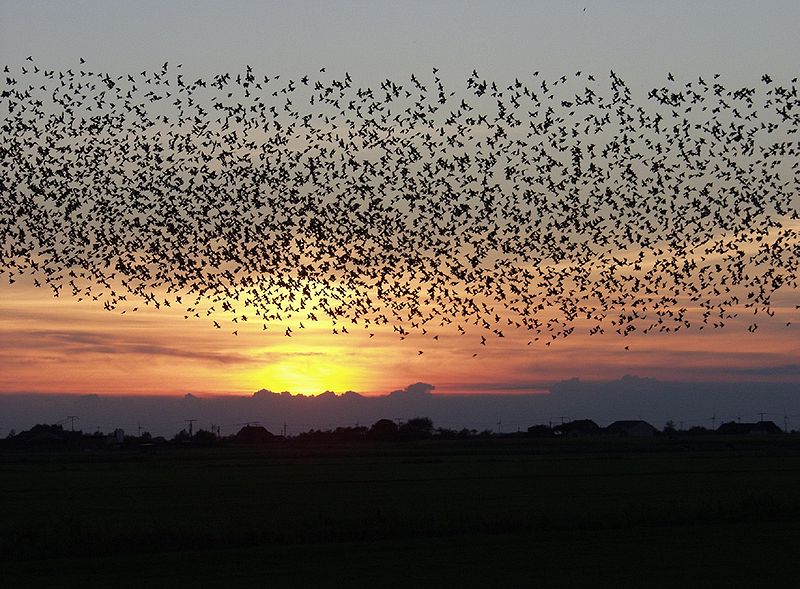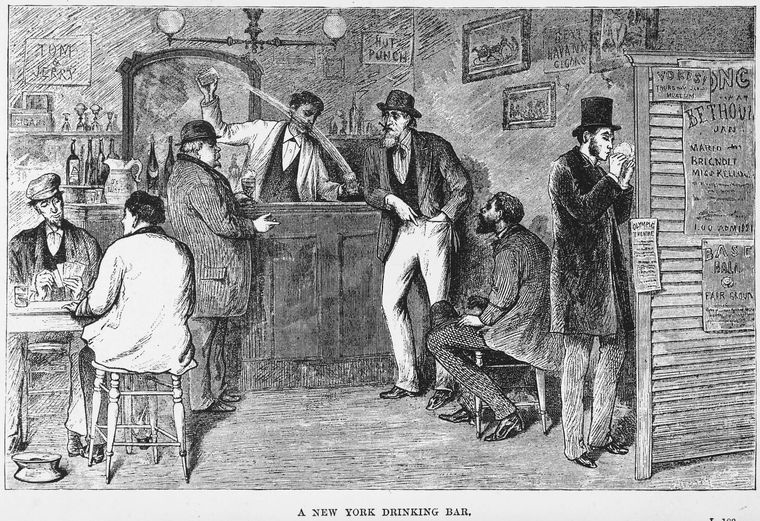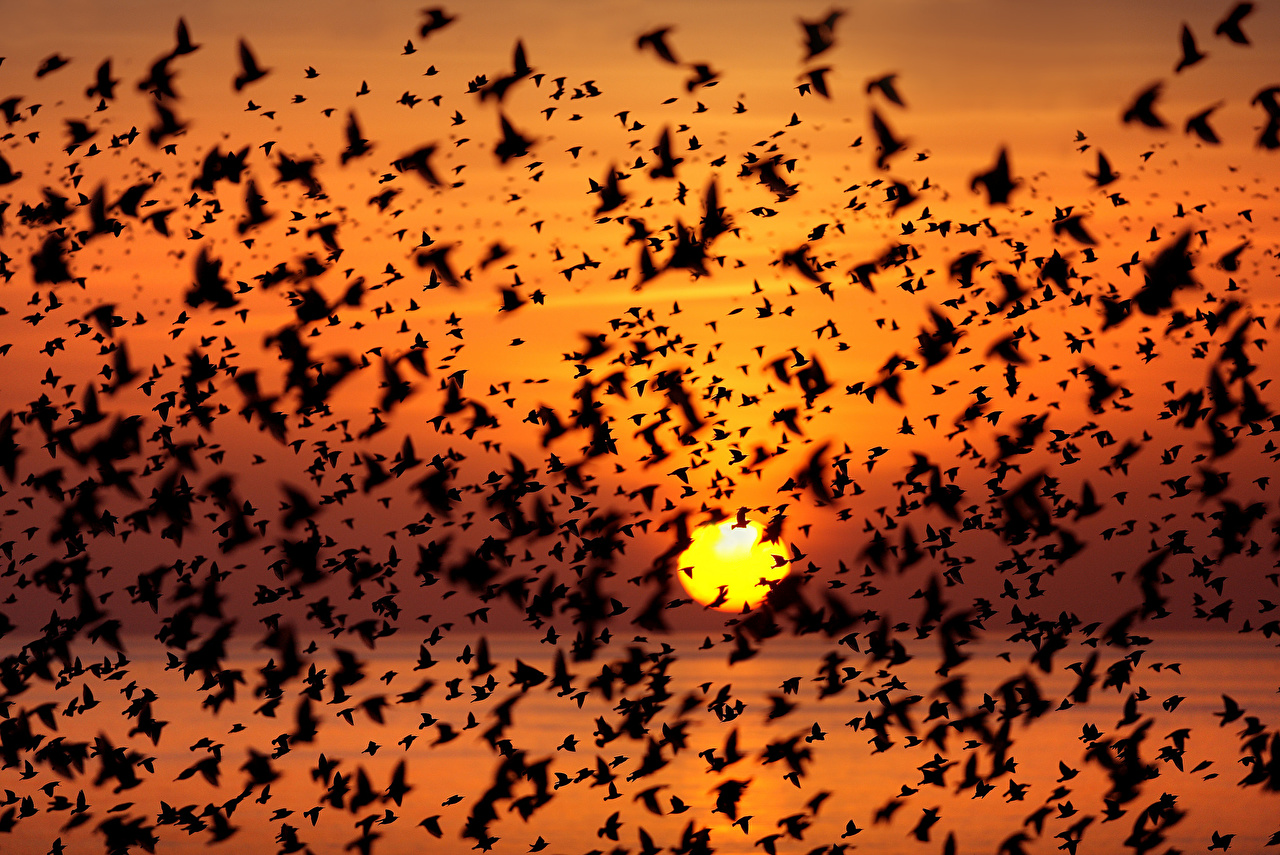ONE MAN’S MEDDLING CAUSED A NATURAL NIGHTMARE

 Autumn’s annual headache is about to begin. Starlings are preparing for their yearly get-togethers. They gather in huge flocks to pass winter by roosting together. We’re talking thousands upon thousands of birds all hunkered down in one place at one time.
Autumn’s annual headache is about to begin. Starlings are preparing for their yearly get-togethers. They gather in huge flocks to pass winter by roosting together. We’re talking thousands upon thousands of birds all hunkered down in one place at one time.
I’ll probably detonate a full-scale nuclear meltdown for writing this, but here goes. Starlings are nasty animals. They are to the bird world what street gangs are to humans: mean, vicious punks bent on dominating their territory by violently running off everyone else. And when you have so many birds congregating in one place, their droppings pose a serious health hazard.
 But here’s the thing: nature never intended Americans to contend with this particular pest. Starlings are native to Europe. So how did we wind up with them?
But here’s the thing: nature never intended Americans to contend with this particular pest. Starlings are native to Europe. So how did we wind up with them?
Blame it on Eugene Schieffelin. As is the case with so many things that turn out disastrously wrong, this one began with “it seemed like a good idea at the time.”
Schieffelin was a wealthy, quiet man. Heir to his family’s pharmaceutical fortune, he had two passions: Shakespeare and wildlife. And one day he hit upon a bizarre scheme to combine them.
 There was a major effort to elevate the lives of the Big Apple’s citizenry in the closing days of the 19th Century. For example, people suggested opening the Metropolitan Museum of Art on Sundays to lure New Yorkers out of saloons. (It didn’t work.)
There was a major effort to elevate the lives of the Big Apple’s citizenry in the closing days of the 19th Century. For example, people suggested opening the Metropolitan Museum of Art on Sundays to lure New Yorkers out of saloons. (It didn’t work.)
Schieffelin was an avid member of something called the American Acclimatization Society, whose members thought introducing European plants and animals in North America was a good thing. Instead, it unleashed what one writer called “biological pollution.”
 An idea hatched in Schieffelin’s mind that was so utterly preposterous, author Kim Todd called him “an eccentric at best, a lunatic at worst.” He would fill the trees of New York’s Central Park with all the birds mentioned in Shakespeare’s works. (Starlings pop up in Henry IV, by the way.) According to Schieffelin’s scheme, seeing living reminders of the Bard’s literature would somehow inspire New Yorkers to open a book and discover literary beauty for themselves. And his family fortune assured him the means to turn this absurdity into reality.
An idea hatched in Schieffelin’s mind that was so utterly preposterous, author Kim Todd called him “an eccentric at best, a lunatic at worst.” He would fill the trees of New York’s Central Park with all the birds mentioned in Shakespeare’s works. (Starlings pop up in Henry IV, by the way.) According to Schieffelin’s scheme, seeing living reminders of the Bard’s literature would somehow inspire New Yorkers to open a book and discover literary beauty for themselves. And his family fortune assured him the means to turn this absurdity into reality.
So he ordered 80 European starlings sent from the Old Country. On a blistery cold, snowy morning in early March 1890 he opened their crates in Central Park. The birds, dazed after long weeks aboard a rolling ship crossing the Atlantic amid winter storms, walked out a few steps and just then stood there. They seemed lost in a haze, unsure what to do in their new home. Schieffelin finally grew tired of standing around in the cold waiting for the birds to fly away. He ran into them, waving his arms and shouting, “Go, go go!!” With that, the very first starlings took wing in American airspace. Schieffelin was so dedicated to the project he even released another 100 starlings in 1891.
At first, the birds were a novelty. The public was intrigued by them. In February 1900, a woman wrote a letter to the New York Times eagerly describing a new bird variety that had recently shown up in her neighborhood and wondered if it could be a starling.
 But America’s love affair with the newcomer didn’t last long. They quickly caused the decline of several other bird types, including the eastern bluebird, state bird of both New York and Missouri.
But America’s love affair with the newcomer didn’t last long. They quickly caused the decline of several other bird types, including the eastern bluebird, state bird of both New York and Missouri.
Say this much for starlings – they have an active love life. From those original 180 birds released in the 1890s their numbers have grown to more than 200 million in Canada, the U. S. and Mexico today.
 So as your local animal control agency gears up this fall to deal with the annual starling nightmare, a wealthy socialite’s environmental meddling was to blame for it. A reminder that sometimes nature is best left to its own devices.
So as your local animal control agency gears up this fall to deal with the annual starling nightmare, a wealthy socialite’s environmental meddling was to blame for it. A reminder that sometimes nature is best left to its own devices.
Did you find this enjoyable? Please continue to join me each week, and I invite you to read Tell it Like Tupper and share your review!
Curious about Tell It Like Tupper? Here’s a chance to see for yourself. Take a sneak peek at a couple chapters in this free downloadable excerpt.
